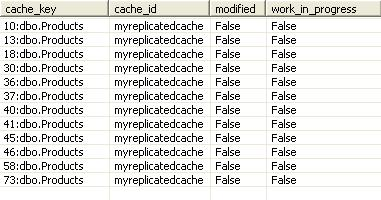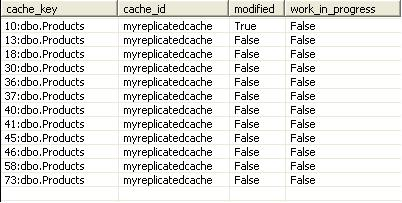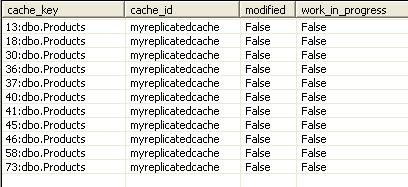| < Previous page | Next page > |
Enabling Notifications For SQL Server
NOTE: This feature is not available in NCache Express and Professional edition.
For enabling notifications for SQLServer tables, you need to follow these steps:
+ ':dbo.Products' );
Note: cache_key must be the same key that is used to add corresponding record in the cache.
Now, As soon as an item is added to the cache with dependency, a row will be created in table 'ncache_db_sync' for this cache key. We'll have to make sure that the format of cache key while adding into cache is exactly same as defined in the corresponding trigger. For our example, cache key for product id 10 should be like, "10:dbo.Products".
Add the following namespaces in your application:
using Alachisoft.NCache.Runtime.Caching;
using Alachisoft.NCache.Runtime.Dependencies;
Following code demonstrates how to add items with dependency.
Cache _cache = NCache.InitializeCache("myreplicatedcache");
_cache.ExceptionsEnabled = true;
try
{
string connectionString = "Provider=SQLOLEDB;Data Source=localhost;Database=northwind;User Id=sa;Password=;";
ProductsFactory productsFactory = new ProductsFactory(connectionString);
Collection<Products> products = productsFactory.FindByCategoryID(8);
foreach (Products product in products)
{
Alachisoft.NCache.Runtime.Dependencies.DBCacheDependency dependency = Alachisoft.NCache.Runtime.Dependencies.DBDependencyFactory.CreateOleDbCacheDependency(connectionString, product.ProductID + ":dbo.Products");
//cache key for product id 10 will be "10:dbo.Products"
mycache.Insert(product.ProductID + ":dbo.Products", product, dependency, Cache.NoAbsoluteExpiration, Cache.NoSlidingExpiration, Alachisoft.NCache.Runtime.CacheItemPriority.Default);
}
}
catch (Exception ex)
{
//throw it.
}
On execution of the above code, a few rows will be added into the table 'ncache_db_sync'. Table 'ncache_db_sync' should now look like:

As we can see the value for column 'modified' is false for all rows. This means that the cached items in myreplicatedcache for these cache_keys are still valid. As soon as we modify a row for, lets say, product id 10 in products table, it will set modified value as true in its respective row.

This means that the cached item for cache_key "10:dbo.Products" in myreplicatedcache is no more valid and this should be invalidated.

If a node crashes while it was removing items from the cache, the next node in the cluster will start process from step one.
See Also
|